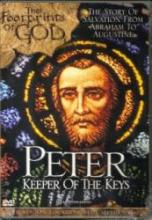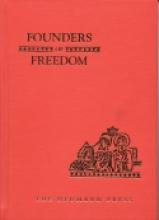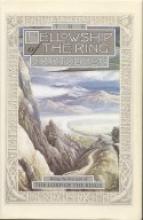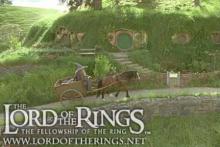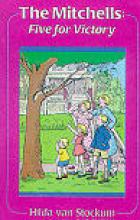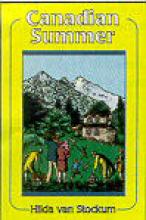No name
The Wind Blows Free
Subject(s):
Setting:
Grade / Age level:
Review:
Reviewed by:
First reviewed:
12-2-06
The Good Land
Subject(s):
Setting:
Grade / Age level:
Review:
Years ago the telephone company ran an ad that sang, “Reach out, reach out and touch someone.” But what if you were too afraid to reach out? What if you were too ashamed of your new circumstances to ask for help? That is the situation for the Warren family, a family that moves to the Texas Panhandle in The Good Land.
Carolyn is the youngest member of the Pierce family. At fifteen, she feels on the verge of adulthood. In her mind, however, everyone seems to treat her as the “baby” of the family and she resents it. Can’t they see how mature she is? After all, she is going to Amarillo to a real high school in the fall.
Amarillo will be a whole new adventure for Carolyn. She wonders what living in the city will be like. She wonders if she will have any friends. She wonders if she will miss her family, even though she will be living with her sister.
In the meantime, however, Carolyn wants to reach out and help the new family that has moved into the area, especially Rowena a girl almost her age.
But after two local boys play a mean trick on them, the father wants nothing to do with the local farmers.
That is until a prairie fire threatens to destroy the Warren home, livestock, and land. Will everyone join together in time to save the Warren family?
Loula Grace Erdman expresses an intuitive understanding of a young teenage girl’s heart, all her secret desires and threatening fears.
The Good Land is both an engaging read and an uplifting story. The exciting plot carries the reader along, while at the same time developing the characters’ virtues. The purity and goodness of the characters shines through even as they struggle with their faults.
Although the book is part of a highly recommended series, The Good Land stands on its own.
In the end, Carolyn finds out that growing up can be both complicated and wonderful. With quite the dramatic ending, The Good Land is also a beautiful unfolding of a love story as love stories should be, focusing on relationships and character, especially kindness to others under all circumstances.
Your daughter won’t want to miss this uplifting story of courage and kindness.
Additional notes:
The Panhandle Series is set in the 1890's..
First reviewed:
4-9-2008
Peter: Keeper of the Keys
Setting:
Grade / Age level:
Resource Type:
Review:
This is a fascinating travel/apologetics documentary focusing on the story of Saint Peter as related in the New Testament. Apologist Steve Ray travels to Rome and many sites in the Holy Land to tell Peter's story. He provides fascinating details of the connections between particular places and important events in Peter's life.
This would make a great supplement to a Bible study, an apologetics lesson on the Papacy, a geography unit on the Middle East or simply an important part of Church history. Our teen discussion group watched this together just after reading the chapter in Pope Benedict's Jesus of Nazareth on Peter's Confession and the story of the Transfiguration. The DVD tied into these themes very nicely.
We very much enjoyed the professional quality of this video that is packed with theological and geographical insights, connections with Old Testament History and a nice visual perspective to well-known Bible stories. The format is engaging and the visuals help make the particulars of the story quite memorable.
I would suggest that this is best for high school and adult viewers, but some younger viewers might enjoy it after a parental preview.
Reviewed by:
First reviewed:
4-17-2008
Founders of Freedom
Subject(s):
Grade / Age level:
Resource Type:
Review:
This first volume in the Catholic American history program, Land of Our Lady, is intended for the fourth grade. It overviews history from Creation to just before Columbus' voyage in 1492. The focus is mostly on Western History - Europe and the Middle East - but Ancient China is also touched upon. Emphasis is placed on the origins of democracy and people in history who were instrumental in its development in various forms (as a preparation for the study of American History - this year's text develops the "background"). The text is very Catholic with a great deal of attention given to Saints who had a role in history and the Catholic Church's influence on civilization. Also included between each Unit are a Marian hymn (with a black and white illustration of Our Lady) and the history of the hymn. While some more controversial issues such as the Inquisition aren't covered (which is reasonable for a 4th grade text), I was happy to see the author point out some of the good and bad of events such as the Crusades. This balanced presentation of history is more helpful for students who have to prepare themselves to defend their Faith in the future.
The text is readable and interesting (although do keep in mind that I LOVE history), but still rather textbookish. Because it is an overview, many topics are covered rather briefly and the "stories" of history aren't present. There are a rather large quantity of written problems, activities and other reviews designed to reinforce the ideas in the text. I would be inclined to only use some of the written problems and instead supplement with some "living books" (stories from History), such as those listed on our Timeline of Good History Reading.
The text is readable and interesting (although do keep in mind that I LOVE history), but still rather textbookish. Because it is an overview, many topics are covered rather briefly and the "stories" of history aren't present. There are a rather large quantity of written problems, activities and other reviews designed to reinforce the ideas in the text. I would be inclined to only use some of the written problems and instead supplement with some "living books" (stories from History), such as those listed on our Timeline of Good History Reading.
Additional notes:
This book was donated for review by Neumann Press
Reviewed by:
First reviewed:
3-2-2000
The Lord of the Rings
Subject(s):
Grade / Age level:
Review:
Reviewed by:
First reviewed:
11-17-2007
The Lord of the Rings: The Fellowship of the Ring (Movie)
Resource Type:
Review:
What a happy thing, especially after all the Harry Potter fuss, to have such a revival in interest in the great Lord of the Rings trilogy because of this new movie (if Harry Potter leads people to Tolkien, I couldn't say much against him). I really believe (and I have noticed this with children of neighbors and friends) that in the end Lord of the Rings tends to be more beloved than Harry Potter. Although Harry Potter can be a little more accessible to younger and/or less experienced readers, the Lord of the Rings is a real adventure story, whereas Harry Potter is more of a fantasy/mystery with a much smaller scope. The Lord of the Rings movies are also making the books more accessible to a new generation of fans.
Overall, Tolkien fans (who are considered rather "fussy") seem to be rather pleased with the movie, and with good reason. Although it's very difficult to turn such a complex and imaginative story into a movie, and the movie will certainly never replace the book, overall I think the movie-makers did a fantastic job. First, and most importantly, I think they captured the overall themes (the temptation of power, the reality of evil, etc.) very well. The characters are very well-cast and quite believable. As might be expected in a movie version, the plot is simplified, several characters are compressed into one, etc. The neat thing is that significant portions of dialogue are taken directly from the book and the essentials of the plot are really quite faithful to the original story. My husband and I (who have both read the books) enjoyed the movie very much. Since we were expecting the birth of a child at the time and she decided to arrive significantly past her due date, we were able to see the movie twice in the theater, which is a real rarity for us.
For those unfamiliar with the books, this first part of three books introduces us to the main characters in the story - Hobbits - and the other races of Middle Earth - dwarves, elves, men and wizards. We see the beauty of the hobbits' homeland - the Shire - and their simplicity and love of nature. We are introduced to Bilbo who discovered "the Ring" and prepares to leave it to his nephew Frodo. When Gandalf discovers the true identity of the ring - the One Ring that was forged by the evil Lord Sauron to control all living things - Frodo sets out to bring the ring to a safer place and thus begins his quest.
This movie is not intended for young children. The story is very complex and focuses on major conflicts between good and evil. Turning it into a movie without making it silly and laughable creates rather intense cinema. Happily the moviemakers sought a PG-13 rather than an R rating and thus there is almost no blood and gore and no bad language or other objectionable content. The movie does, of course, portray battle and action scenes and a number of rather frightening creatures that some young children find too scary even when reading the book. It is sometimes easier to allow younger children to watch this sort of movie when it is released to video/DVD where the entire effect is less intense and scenes may be edited at will.
 Although I think that watching the movie will lead many people to pick up the book, I think it best to read the book before seeing the movie so that one's first impressions in the imagination come directly from the book rather than another's re-creation of it. Parents, in particular, might do well to read the book before seeing the movie because, particularly if they aren't regular movie-goers, I think the violence and intensity wouldn't make much sense without being familiar with the plot and themes.
Although I think that watching the movie will lead many people to pick up the book, I think it best to read the book before seeing the movie so that one's first impressions in the imagination come directly from the book rather than another's re-creation of it. Parents, in particular, might do well to read the book before seeing the movie because, particularly if they aren't regular movie-goers, I think the violence and intensity wouldn't make much sense without being familiar with the plot and themes.
The extended version of the movie, which was released to video and DVD in November 2002, is really worth seeing. It incorporates 30 minutes of additional footage into the movie which helps make the story more understandable and enjoyable, but made the movie too long for the theatrical release.
Overall, Tolkien fans (who are considered rather "fussy") seem to be rather pleased with the movie, and with good reason. Although it's very difficult to turn such a complex and imaginative story into a movie, and the movie will certainly never replace the book, overall I think the movie-makers did a fantastic job. First, and most importantly, I think they captured the overall themes (the temptation of power, the reality of evil, etc.) very well. The characters are very well-cast and quite believable. As might be expected in a movie version, the plot is simplified, several characters are compressed into one, etc. The neat thing is that significant portions of dialogue are taken directly from the book and the essentials of the plot are really quite faithful to the original story. My husband and I (who have both read the books) enjoyed the movie very much. Since we were expecting the birth of a child at the time and she decided to arrive significantly past her due date, we were able to see the movie twice in the theater, which is a real rarity for us.
For those unfamiliar with the books, this first part of three books introduces us to the main characters in the story - Hobbits - and the other races of Middle Earth - dwarves, elves, men and wizards. We see the beauty of the hobbits' homeland - the Shire - and their simplicity and love of nature. We are introduced to Bilbo who discovered "the Ring" and prepares to leave it to his nephew Frodo. When Gandalf discovers the true identity of the ring - the One Ring that was forged by the evil Lord Sauron to control all living things - Frodo sets out to bring the ring to a safer place and thus begins his quest.
This movie is not intended for young children. The story is very complex and focuses on major conflicts between good and evil. Turning it into a movie without making it silly and laughable creates rather intense cinema. Happily the moviemakers sought a PG-13 rather than an R rating and thus there is almost no blood and gore and no bad language or other objectionable content. The movie does, of course, portray battle and action scenes and a number of rather frightening creatures that some young children find too scary even when reading the book. It is sometimes easier to allow younger children to watch this sort of movie when it is released to video/DVD where the entire effect is less intense and scenes may be edited at will.
 Although I think that watching the movie will lead many people to pick up the book, I think it best to read the book before seeing the movie so that one's first impressions in the imagination come directly from the book rather than another's re-creation of it. Parents, in particular, might do well to read the book before seeing the movie because, particularly if they aren't regular movie-goers, I think the violence and intensity wouldn't make much sense without being familiar with the plot and themes.
Although I think that watching the movie will lead many people to pick up the book, I think it best to read the book before seeing the movie so that one's first impressions in the imagination come directly from the book rather than another's re-creation of it. Parents, in particular, might do well to read the book before seeing the movie because, particularly if they aren't regular movie-goers, I think the violence and intensity wouldn't make much sense without being familiar with the plot and themes.The extended version of the movie, which was released to video and DVD in November 2002, is really worth seeing. It incorporates 30 minutes of additional footage into the movie which helps make the story more understandable and enjoyable, but made the movie too long for the theatrical release.
Additional notes:
Rated PG-13 (Violence)
Reviewed by:
First reviewed:
1-2-03
The Lord of the Rings: The Two Towers (Movie)
Resource Type:
Review:
After much anticipation, my seven year old son and I saw the Two Towers on the Saturday before Christmas. My nine year old daughter watched it with my husband the night before in order to switch off with the little ones at home. A year ago I wouldn't have expected to be taking any of my children to see the movie (because of their age), but a lot has changed since then for us. John read the entire Lord of the Rings aloud to the children over the past year. Jacinta read it, again, on her own. She and Matthew have also listened to the 13 disc BBC audio drama numerous times. They also very much enjoyed the Fellowship of the Ring movie on the "small screen". The point is that they have really attained a decent grasp of the story. In addition, my son, who doesn't like loud noises much, wore earplugs (which diminishes the intensity quite a bit) and my husband and I both did a bit of editing by simply covering their eyes with our hands. This was necessary during the previews and commercials before the movie more than for the movie itself.
Two of the toughest characters to portray - Gollum and Treebeard - were absolutely amazing. Gollum is a complex character - tortured by his desire for the ring, whom you don't know whether to hate or pity. A computer graphics generated character, he was entirely believable and pathetic in the way, I think, Tolkien intended him to be imagined. Treebeard could so easily have been a silly cartoonish character. While not without humor, he's also magnificent and ...respectable in the way that one would appreciate and admire an older gentleman who's a bit eccentric.
 There are several general things that I think remarkable about this phenomenal task of creating movies from Tolkien's beloved stories. (For those who really like movies, as my husband and I do, the Fellowship of the Ring DVD is interesting partly because of the extensive commentaries, interviews, photo galleries, etc. which provide details on both how the movies were made and what the movie-makers were trying to do.) Many of the people most intimately involved in the movie production have read the story countless times. Faithfulness to Tolkien was a major priority for them. They have referred to the books over and over again, not just in writing the screenplay, but in how the actors portray their parts. A great deal of attention and thought has gone into many, many details of the story. For example, recordings exist of Tolkien himself reading parts of his stories. Ian McKellan, who plays Gandalf, based his portrayal of Gandalf, in voice tone and expression, on these recordings. Christopher Lee, who plays Saruman, has read the books every year for decades. In addition to his excellent portrayal of the villain, he discussed parts of the book with the other actors to be sure that certain details weren't left out. The two artists most famous for illustrating editions of the Lord of the Rings, Alan Lee and John Howe, worked as art consultants on the sets and miniatures. Peter Jackson, the director, collaborated with hundreds of cast members, production members and Tolkien fans to fine tune the script and the ideas. We had a local news story here in Wisconsin about a man who was, as a hobby, an expert in Tolkien's fictional languages. He offered his services to Peter Jackson and was invited to play a part in the production. I've never heard of any project done in this kind of fashion and the final result is truly reflective of the incredible effort and labor of love that went into making these movies.
There are several general things that I think remarkable about this phenomenal task of creating movies from Tolkien's beloved stories. (For those who really like movies, as my husband and I do, the Fellowship of the Ring DVD is interesting partly because of the extensive commentaries, interviews, photo galleries, etc. which provide details on both how the movies were made and what the movie-makers were trying to do.) Many of the people most intimately involved in the movie production have read the story countless times. Faithfulness to Tolkien was a major priority for them. They have referred to the books over and over again, not just in writing the screenplay, but in how the actors portray their parts. A great deal of attention and thought has gone into many, many details of the story. For example, recordings exist of Tolkien himself reading parts of his stories. Ian McKellan, who plays Gandalf, based his portrayal of Gandalf, in voice tone and expression, on these recordings. Christopher Lee, who plays Saruman, has read the books every year for decades. In addition to his excellent portrayal of the villain, he discussed parts of the book with the other actors to be sure that certain details weren't left out. The two artists most famous for illustrating editions of the Lord of the Rings, Alan Lee and John Howe, worked as art consultants on the sets and miniatures. Peter Jackson, the director, collaborated with hundreds of cast members, production members and Tolkien fans to fine tune the script and the ideas. We had a local news story here in Wisconsin about a man who was, as a hobby, an expert in Tolkien's fictional languages. He offered his services to Peter Jackson and was invited to play a part in the production. I've never heard of any project done in this kind of fashion and the final result is truly reflective of the incredible effort and labor of love that went into making these movies.
Jackson and crew did a great job of balancing this rather dark, middle part of the story with some enjoyable comic relief (especially found in the character of Gimli the dwarf) which flowed quite well. I thought there were a few more unnecessary plot-deviations than in the first movie (particularly a significant thread involving Aragorn), but this annoyance was rather minor. We enjoyed the movie very much and look forward to its conclusion, The Lord of the Rings: Return of the King, coming out in December 2003.
Two of the toughest characters to portray - Gollum and Treebeard - were absolutely amazing. Gollum is a complex character - tortured by his desire for the ring, whom you don't know whether to hate or pity. A computer graphics generated character, he was entirely believable and pathetic in the way, I think, Tolkien intended him to be imagined. Treebeard could so easily have been a silly cartoonish character. While not without humor, he's also magnificent and ...respectable in the way that one would appreciate and admire an older gentleman who's a bit eccentric.
 There are several general things that I think remarkable about this phenomenal task of creating movies from Tolkien's beloved stories. (For those who really like movies, as my husband and I do, the Fellowship of the Ring DVD is interesting partly because of the extensive commentaries, interviews, photo galleries, etc. which provide details on both how the movies were made and what the movie-makers were trying to do.) Many of the people most intimately involved in the movie production have read the story countless times. Faithfulness to Tolkien was a major priority for them. They have referred to the books over and over again, not just in writing the screenplay, but in how the actors portray their parts. A great deal of attention and thought has gone into many, many details of the story. For example, recordings exist of Tolkien himself reading parts of his stories. Ian McKellan, who plays Gandalf, based his portrayal of Gandalf, in voice tone and expression, on these recordings. Christopher Lee, who plays Saruman, has read the books every year for decades. In addition to his excellent portrayal of the villain, he discussed parts of the book with the other actors to be sure that certain details weren't left out. The two artists most famous for illustrating editions of the Lord of the Rings, Alan Lee and John Howe, worked as art consultants on the sets and miniatures. Peter Jackson, the director, collaborated with hundreds of cast members, production members and Tolkien fans to fine tune the script and the ideas. We had a local news story here in Wisconsin about a man who was, as a hobby, an expert in Tolkien's fictional languages. He offered his services to Peter Jackson and was invited to play a part in the production. I've never heard of any project done in this kind of fashion and the final result is truly reflective of the incredible effort and labor of love that went into making these movies.
There are several general things that I think remarkable about this phenomenal task of creating movies from Tolkien's beloved stories. (For those who really like movies, as my husband and I do, the Fellowship of the Ring DVD is interesting partly because of the extensive commentaries, interviews, photo galleries, etc. which provide details on both how the movies were made and what the movie-makers were trying to do.) Many of the people most intimately involved in the movie production have read the story countless times. Faithfulness to Tolkien was a major priority for them. They have referred to the books over and over again, not just in writing the screenplay, but in how the actors portray their parts. A great deal of attention and thought has gone into many, many details of the story. For example, recordings exist of Tolkien himself reading parts of his stories. Ian McKellan, who plays Gandalf, based his portrayal of Gandalf, in voice tone and expression, on these recordings. Christopher Lee, who plays Saruman, has read the books every year for decades. In addition to his excellent portrayal of the villain, he discussed parts of the book with the other actors to be sure that certain details weren't left out. The two artists most famous for illustrating editions of the Lord of the Rings, Alan Lee and John Howe, worked as art consultants on the sets and miniatures. Peter Jackson, the director, collaborated with hundreds of cast members, production members and Tolkien fans to fine tune the script and the ideas. We had a local news story here in Wisconsin about a man who was, as a hobby, an expert in Tolkien's fictional languages. He offered his services to Peter Jackson and was invited to play a part in the production. I've never heard of any project done in this kind of fashion and the final result is truly reflective of the incredible effort and labor of love that went into making these movies.Jackson and crew did a great job of balancing this rather dark, middle part of the story with some enjoyable comic relief (especially found in the character of Gimli the dwarf) which flowed quite well. I thought there were a few more unnecessary plot-deviations than in the first movie (particularly a significant thread involving Aragorn), but this annoyance was rather minor. We enjoyed the movie very much and look forward to its conclusion, The Lord of the Rings: Return of the King, coming out in December 2003.
Additional notes:
Rated PG-13 (Violence)
Reviewed by:
First reviewed:
1-2-03
The Mitchells: Five for Victory
Subject(s):
Grade / Age level:
Review:
This is a charming and thoughtful story of an American family of five children during World War II (based on Hilda Van Stockum's own family) whose father is away at war. The family is very real with plenty of worries and troubles...but they manage to find joy with each other. For independent reading, it could be one your children's first full-length chapter books.Wit and wisdom make it a can't miss for adults as well (a perfect read-aloud). This has been a favorite with our family (for children as young as four or five) for many years.
Washington D.C. is an exciting place to grow up and the children are enchanted with pets, clubs and a mysterious girl who has just moved in down the street. Mother's attempts to take in boarders and a visit from Uncle Jim and "Mr. Jenkins" keep them busy while Father is away. Pets and babies are particularly memorable characters.
There is an aspect of the story that might be troubling for young children sensitive about adoption. A neighbor who considers adopting a war refugee decides not to because the child doesn't get along with the lady's son. The fate of adopted children is discussed rather carelessly by this lady (in terms of "well, my son has to come first") and the mother of the Mitchells doesn't have any good comebacks to resolve the issue. The story resolves nicely, however, as the girl ends up finding her grandfather, but this segment might need a little explanation. My sister-in-law (who has two adopted children) found the issue troubling and put the book aside until her children were older.
Washington D.C. is an exciting place to grow up and the children are enchanted with pets, clubs and a mysterious girl who has just moved in down the street. Mother's attempts to take in boarders and a visit from Uncle Jim and "Mr. Jenkins" keep them busy while Father is away. Pets and babies are particularly memorable characters.
There is an aspect of the story that might be troubling for young children sensitive about adoption. A neighbor who considers adopting a war refugee decides not to because the child doesn't get along with the lady's son. The fate of adopted children is discussed rather carelessly by this lady (in terms of "well, my son has to come first") and the mother of the Mitchells doesn't have any good comebacks to resolve the issue. The story resolves nicely, however, as the girl ends up finding her grandfather, but this segment might need a little explanation. My sister-in-law (who has two adopted children) found the issue troubling and put the book aside until her children were older.
Perspective:
Catholic
Reviewed by:
First reviewed:
12-12-05
Canadian Summer
Subject(s):
Setting:
Grade / Age level:
Review:
Canadian Summer continues the story of the Mitchell Family (this is the second book in the series) several years after World War II. Baby Catherine has joined the family. Father is back from the war and has moved to Quebec for his job. He has difficulty finding housing for the family, but finally makes arrangements and sends Mother, Granny and the children up on the train. Upon arriving, the ladies are shocked to find that accomodations consist of a remote ski cabin lacking electricity or running water. Doctors and stores are many miles away and transportation is nearly impossible. Wild animals and a big lake worry Mother, but intrigue the children. Of course they discover the pleasures and difficulties of rural life and have many interesting and humorous adventures.
Hilda Van Stockum is a gifted storyteller whose motherly (and grandmotherly) experience is evident in all of her books. The little details and stories, so grounded in the truth and reality of large loving families, are just plain wonderful. These books are highly recommended.
Hilda Van Stockum is a gifted storyteller whose motherly (and grandmotherly) experience is evident in all of her books. The little details and stories, so grounded in the truth and reality of large loving families, are just plain wonderful. These books are highly recommended.
Perspective:
Catholic
Reviewed by:
First reviewed:
12-12-05



